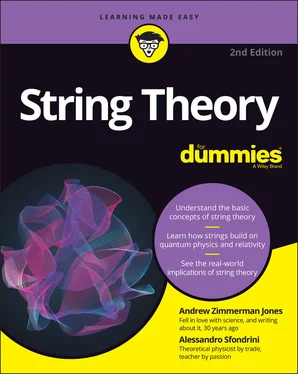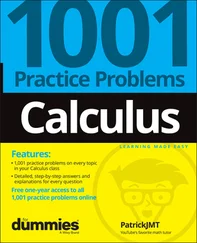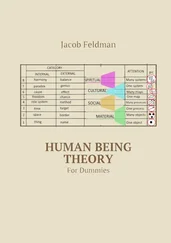String Theory: Seeing What Vibrating Strings Can Tell Us about the Universe
String theory is a physics theory that models the fundamental particles and interactions in the universe by representing everything in terms of vibrating filaments of energy, called strings. Like all modern physical theories, this image is actually expressed in a precise mathematical language that eventually results in quantitative as well as qualitative predictions.
In this theory, strings of energy represent the most fundamental aspect of nature. String theory also predicts other fundamental objects, called branes, which emerge as a natural generalization of the strings . All the matter in our universe consists of the vibrations of these strings (and branes). One important result of string theory is that gravity is a natural consequence of the theory, which is why scientists believe that string theory may hold the answer to possibly uniting gravity with the other forces that affect matter.
 We want to reiterate something important: String theory is a mathematical theory. It’s based on mathematical equations that can be interpreted in certain ways. If you’ve never studied physics before, this may seem odd, but all physical theories are expressed in the language of mathematics. In this book, we avoid the mathematics and try to get to the heart of what the theory is telling us about the physical universe.
We want to reiterate something important: String theory is a mathematical theory. It’s based on mathematical equations that can be interpreted in certain ways. If you’ve never studied physics before, this may seem odd, but all physical theories are expressed in the language of mathematics. In this book, we avoid the mathematics and try to get to the heart of what the theory is telling us about the physical universe.
 At present, no one knows exactly what the “final” version of string theory, which will precisely reproduce the universe as we know it, should look like. Scientists have some vague notions about the general elements that will exist within the theory, but no one has come up with the final list of equations that represents all of string theory in our universe, and experiments haven’t yet been able to confirm it (though they haven’t successfully refuted it, either). Physicists have created simplified versions of a stringy universe, but none quite describes our universe … yet.
At present, no one knows exactly what the “final” version of string theory, which will precisely reproduce the universe as we know it, should look like. Scientists have some vague notions about the general elements that will exist within the theory, but no one has come up with the final list of equations that represents all of string theory in our universe, and experiments haven’t yet been able to confirm it (though they haven’t successfully refuted it, either). Physicists have created simplified versions of a stringy universe, but none quite describes our universe … yet.
Using tiny and huge concepts to create a theory of everything
String theory is a type of high-energy theoretical physics, practiced largely by particle physicists. It’s an evolution of quantum field theory (see the sidebar “What is quantum field theory?”), which is the current framework that describes the particles and forces in our universe (except gravity). String theory famously predicts that the universe should have more spatial dimensions than the three we observe. It also shows that, in principle, the extra dimensions within the theory can be wrapped up into a very small size (a process called compactification ) in a way that reproduces fundamental particles like the photon or the electron. This is the power of string theory — using the fundamental strings, and the way extra dimensions are compactified, to provide a unified description of all the particles and forces known to modern physics.
Among the forces that need to be described is, of course, gravity. Superficially, gravity has been the simplest force for humans to grasp since the time of Galileo. There is, however, more than meets the eye, as Einstein discovered: Gravity is a theory of the geometry of space and time. For this reason, it’s notoriously hard to marry the ideas of quantum physics with gravity. String theory does incorporate both gravity and quantum physics in a natural way. You can even say that string theory is a theory of quantum gravity because it’s impossible to construct any string theory without gravity.
Still, not every aspect of gravity is understood from string theory. Importantly, the established theory of gravity, general relativity, has a fluid, dynamic space-time, and one aspect of string theory that’s still being worked on is getting that type of space-time to emerge out of the theory.
The major achievements of string theory are concepts you can’t see, unless you know how to interpret the physics equations. String theory deals with rather extreme amounts of energy; that’s why it’s hard to test its predictions directly with experiments. Yet it has revealed profound mathematical relationships within the equations, which leads physicists to believe that they must be true. We discuss these properties and relationships — known by jargon that describes various symmetries and dualities, the cancellation of anomalies, and the explanation of black hole entropy — in Chapters 10and 11.
In recent years, there has been much public debate over string theory, waged within newsrooms and across the internet. We address these issues in Part 5, but they come down to fundamental questions about how science should be pursued. String theorists believe that their methods are sound, while the critics believe they’re questionable because they stray too far from contact with experimentation — the true core of physics. Time, and experimental evidence, will tell which side has made the better argument.
WHAT IS QUANTUM FIELD THEORY?
Physicists use fields to describe the things that don’t just have a particular position but exist at every point in space. For example, you can think about the temperature in a room as a field — it may be different near an open window than near a hot stove, and you could imagine measuring the temperature at every single point in the room. A field theory, then, is a set of rules that tell you how some field will behave, such as how the temperature in the room changes over time.
In Chapters 7and 8, you find out about one of the most important achievements of the 20th century: the development of quantum theory . This refers to principles that lead to seemingly bizarre physical phenomena that nonetheless appear to occur in the subatomic world.
When you combine these two concepts, you get quantum field theory: a field theory that obeys the principles of quantum theory. All modern particle physics is described by quantum field theories.
A quick look at where string theory has been
String theory was originally developed in 1968 as an attempt to explain the behavior of hadrons (such as protons and neutrons, the particles that make up an atomic nucleus) inside particle accelerators. Physicists later realized this theory could also be used to explain some aspects of gravity. For more than a decade, string theory was abandoned by most physicists, mainly because it required a large number of extra, unseen dimensions. It rose to prominence again in the mid-1980s, when physicists were able to prove it was a mathematically consistent theory.
In the mid-1990s, string theory was updated to become a more complex theory, called M-theory, which contains more objects than just strings. These new objects were called branes, and they could have anywhere from zero to nine dimensions. The earlier string theories (which now also include branes) were seen as approximations of the more complete M-theory.
 Technically, the modern M-theory is more than the traditional string theory, but the name “string theory” is still often used for M-theory and its various offspring theories. (Even the original superstring theories have been shown to include branes.) Our convention in this book is to refer to theories that contain branes, which are variants of M-theory and the original string theories, using the term “string theory.”
Technically, the modern M-theory is more than the traditional string theory, but the name “string theory” is still often used for M-theory and its various offspring theories. (Even the original superstring theories have been shown to include branes.) Our convention in this book is to refer to theories that contain branes, which are variants of M-theory and the original string theories, using the term “string theory.”
Читать дальше

 We want to reiterate something important: String theory is a mathematical theory. It’s based on mathematical equations that can be interpreted in certain ways. If you’ve never studied physics before, this may seem odd, but all physical theories are expressed in the language of mathematics. In this book, we avoid the mathematics and try to get to the heart of what the theory is telling us about the physical universe.
We want to reiterate something important: String theory is a mathematical theory. It’s based on mathematical equations that can be interpreted in certain ways. If you’ve never studied physics before, this may seem odd, but all physical theories are expressed in the language of mathematics. In this book, we avoid the mathematics and try to get to the heart of what the theory is telling us about the physical universe. At present, no one knows exactly what the “final” version of string theory, which will precisely reproduce the universe as we know it, should look like. Scientists have some vague notions about the general elements that will exist within the theory, but no one has come up with the final list of equations that represents all of string theory in our universe, and experiments haven’t yet been able to confirm it (though they haven’t successfully refuted it, either). Physicists have created simplified versions of a stringy universe, but none quite describes our universe … yet.
At present, no one knows exactly what the “final” version of string theory, which will precisely reproduce the universe as we know it, should look like. Scientists have some vague notions about the general elements that will exist within the theory, but no one has come up with the final list of equations that represents all of string theory in our universe, and experiments haven’t yet been able to confirm it (though they haven’t successfully refuted it, either). Physicists have created simplified versions of a stringy universe, but none quite describes our universe … yet.










